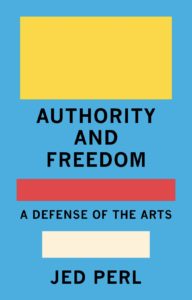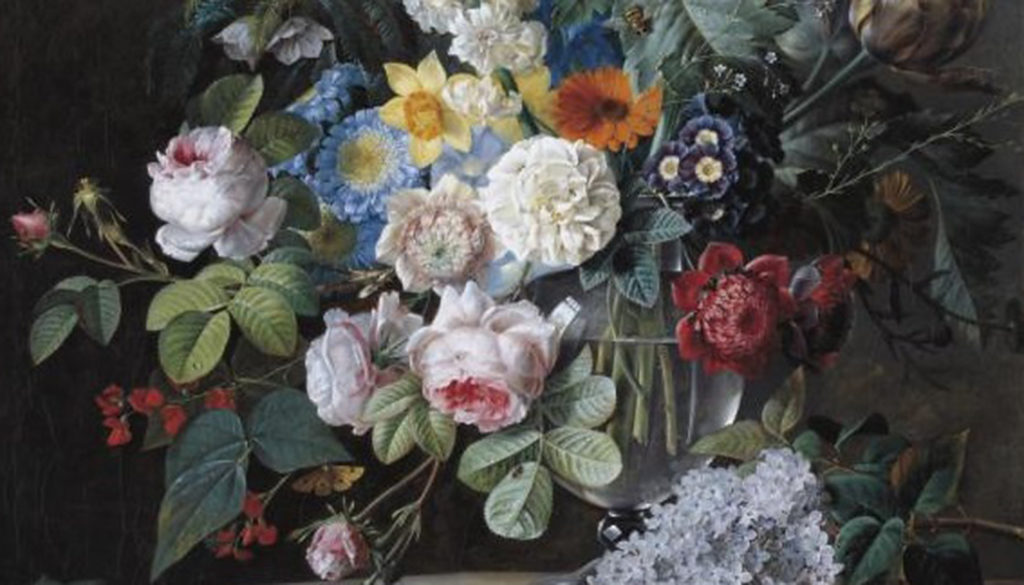Jed Perl was The New Republic art critic for 20 years, writes frequently for The New York Review of Books, and has published, among other titles, a two-volume biography of the American sculptor Alexander Calder.
His newest book — “Authority and Freedom: A Defense of the Arts” (Knopf, $14.89) — is a “cri de coeur” (“impassioned outcry”) against the notion that art is only useful insofar as it advances or promotes a particular ideology, political stance, or “clearly defined civic or community service.”
That arts have their own independent significance was an idea that Perl took for granted growing up in the ’50s and ’60s. Over time he came to realize that attitudes toward art are in fact cyclical. During the Depression, for example, more and more people, including artists themselves, “began to insist that their work be viewed and evaluated through a social or political lens.”
That’s happening again now, obviously.
A work of art, Perl insists, is “an imaginative achievement to which the audience freely responds.”
To that end, he aims “to release art from the stranglehold or relevance — from the insistence that works of art, whether classic or contemporary, are validated (or invalidated) by the extent to which they line up with (or fail to line up with) our current social and political concerns.”
“Artists make,” he asserts tartly, “politicians do.”
This is not to say that the artist gaily flits about fulfilling his every whim. True artists engage “in processes and procedures as rigorous, disciplined, and strenuous as those of many scientists.”
Like the scientific vocation, “the artistic vocation is a way of seeing and knowing the world. When passionately embraced, it eludes all labels.”

Moreover, the very rigor, discipline, and single-minded focus demanded by art grant an interior freedom that ideally renders the artist impervious to ideology. Perl points, for example, to French artist Pierre-Joseph Redouté who, born in 1759, both moved among royalty and managed to keep painting in spite of the political and social upheaval occurring in France during his lifetime.
That oppressive regimes — Stalinist Russia, for example — have decimated entire generations of artists is, Perl notes, “a tragedy of epic proportions.” But it is not the province of art to overthrow oppressive regimes. It is the province of art to consider and to illuminate the human condition.
Perl quotes Flannery O’Connor, who in a letter to a friend disapproved of a moralistic work of fiction. The book, she wrote, is “just propaganda and its being propaganda on the side of the angels only makes it worse. The novel is an art form and when you use it for anything other than art, you pervert it.”
She continued, “Art is wholly concerned with the good of that which is made; it has no utilitarian end.”
I would add that to attempt to forcibly impose on art a “utilitarian” end, to insist that art must propagandize, to impose any agenda on art other than “the good of that which is made” is to squelch the authentic artist and to pervert arguably the noblest pursuit of mankind.
It’s also to encourage bad art. Because if the focus is on imparting a “message,” rather than on the excellence of the art, art becomes one-dimensional: a poster, a bullhorn, a bludgeon.
Internationally renowned fiber artist and weaver Anni Albers noted, “Our playfulness today often … becomes no more than a bid for attention, rather than a convincing innovation. Limitlessness leads to nothing but formlessness, a melting into nowhere. But it is form — whatever form it may be — that is, I feel, our salvation.”
In the poem “In Memory of W. B. Yeats,” W.H. Auden wrote: “poetry makes nothing happen.” The artist, Perl adds, “is not pretending to give an answer to anything.”
“Far from offering an escape from the world,” he adds, “the arts present one of the most difficult and hard-fought ways to enter into the life of our time or any other time.”
“The artist in the act of creation … almost inevitably risks irrelevance. But the decision to reject doing in favor of making, which some have described as a retreat into self-absorption and narcissism, is in fact an act of courage. Artists reenter the world by sending the work that they’ve made back into the world, where it lives on — independent, inviolable — in what Auden called ‘the valley of its making.’ That is a place apart — paradoxically, triumphantly, apart.”
Art, in other words, has an authority of its own. Though the artist is concerned with the state of the world, her fidelity to vocation is itself the clearest possible, most passionate response: a complete, sacrificial, offering of self and ordering of life to the rigors of her gift.
The great singer-songwriter Nina Simone once said: “My thing, what I hope to do all the time, is to be so completely myself, which — that’s what I hope I am — to be so much myself that my audience or any people that meet me are confronted. They’re confronted with what I am, inside and out, as honest as I can be. And this way, they have to see things about themselves, immediately.”
Or as Vincent van Gogh summed up: “I feel that there is nothing more truly artistic than to love people.”

